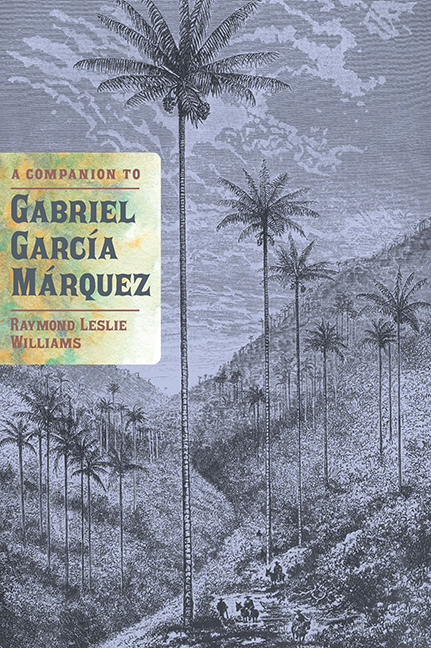Book contents
- Frontmatter
- Dedication
- Contents
- Abbreviations
- Foreword
- 1 García Márquez, the Modernists, and the Boom
- 2 Cien años de soledad and the Macondo Cycle
- 3 El otoño del patriarca and the Political Writings
- 4 Postmodern Gestures: El amor en los tiempos del cólera, Crónica de una muerte anunciada, and La increíble y triste historia de la cándida Eréndira y de su abuela desalmada
- 5 Recent Writing
- 6 Epilogue
- Guide to Further Reading
- Select Bibliography
- Index
2 - Cien años de soledad and the Macondo Cycle
Published online by Cambridge University Press: 26 May 2022
- Frontmatter
- Dedication
- Contents
- Abbreviations
- Foreword
- 1 García Márquez, the Modernists, and the Boom
- 2 Cien años de soledad and the Macondo Cycle
- 3 El otoño del patriarca and the Political Writings
- 4 Postmodern Gestures: El amor en los tiempos del cólera, Crónica de una muerte anunciada, and La increíble y triste historia de la cándida Eréndira y de su abuela desalmada
- 5 Recent Writing
- 6 Epilogue
- Guide to Further Reading
- Select Bibliography
- Index
Summary
García Márquez is best known for his novel Cien años de soledad (One Hundred Years of Solitude). This was the centerpiece of his writing career when he was awarded the Nobel Prize for Literature in 1982. This novel was the culmination of the ‘cycle of Macondo’ fictions that García Márquez began constructing in the early 1950s and continued to elaborate, in short fictions and novels, until 1967. What is exceptional in this novel is its unique combination of seemingly incongruous elements, for it is both traditional and modern, at the same time modern and postmodern, and also heavily indebted to the traditions of both oral and written cultures. The synthesis of these seemingly opposite elements invites the reader to question the binary thinking typically used to discuss literature. The Macondo fictions that preceded this novel – La hojarasca (Leafstorm, 1955), El coronel no tiene quien le escriba (No One Writes to the Colonel, 1961), La mala hora (In Evil Hour, 1962), Los funerales de la mamá grande (1962, with its cover story translated in No One Writes to the Colonel and Other Stories under the title Big Mama's funeral) – are also the subject of this chapter.
García Márquez has become widely celebrated for his creative imagination, for his commitment to progressive social change in Latin America, and, for better or for worse, as the paradigmatic ‘magic realist’ author. Writing under the tutelage of a group of intellectuals recently identified as the Group of Cartagena, he began the creation of Macondo in Cartagena during the years 1948 and 1949. He completed the first Macondo novel, La hojarasca, in Barranquilla while in dialogue with his friends of the Group of Barranquilla; it appeared in print in 1955. According to Oscar de la Espriella, one of his friends from Cartagena, the young García Márquez did not seem to fit among intellectuals in Bogotá: he was always dressed informally, in bright-colored Caribbean clothes, in contrast to the formal and dark clothes of the residents of Bogotá. More importantly, according to De la Espriella, he showed signs of intellectual brilliance and literary talent. The five books of the cycle of Macondo made that observation prophetic.
- Type
- Chapter
- Information
- A Companion to Gabriel García Márquez , pp. 33 - 76Publisher: Boydell & BrewerPrint publication year: 2021



